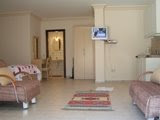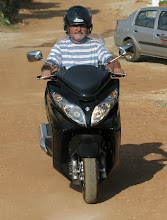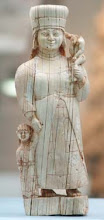
Since the beginning of known written history, from generation to generation, the development of the modern world has been forced to be linked to the origins of ancient Greek civilization, where this teaching is bound with the most stringent conservative conditions to be the main topic. This position is so strong that it has a general acceptance of the entire world for ages. The historical wheel of development turns from the ancient Greek, Rome, and Renaissance Europe to modern age. Ancient Greek civilization, all of a sudden, appears in a crossroad point of the history, from which the previous details are not known. But this civilization is pure European. Its language is from Indo-European family. The founders of this culture are from white race. The history goes back down to 1500-1600 B.C. So old, but magnificent artifacts are found from these dates, Mycenaean art. These are the evidences for so great culture that to be the ancestors of the modern world necessitates such dazzling civilization. Above all, it is in Europe. Written documents are found, but not deciphered yet despite of endless efforts. How come so many documents are still not readable! World does not know what these documents tell us. It is so confusing if such a great civilization had not left any thing from former foundations to their followers. Today’s scholars force to find something that can be dated to 3000 B.C. in order to have an evidence to support their position, but it is unfortunate. Therefore, they do not wish to discuss the issue as it is so touchy. The adventure starts with coming of Myceneans to mother land around 2000 B.C. Everything seems all right except an explanation about previous civilization from where Myceneans came there. Even the root of the language they had spoken was left unknown as a secret. Not to make it clear, the scientific unknowns are drawn forward, with scientific termination they say Linear A, Linear B, etc. They can talk for hours and hours and even write books and books about weak links with Greek language, but other major questions are left answerless. Crete plays a key role for whereabouts of the origin of the Mycenaean indeed. Around 2000 B.C. the Minoan civilization had prevailed in Crete. Although the language they had spoken was not Indo-European, the Princess Aerope who had given her name to today’s Europe was the daughter of a Minoan king. May be we owe too much to the Greek historians who lived later, as they created the mythology by shuffling the reality and unreality without putting them in order when transferring them to following generations. The same thing happens for Crete as well, we find the reality and unreality together. We should accept that auricular communication makes it easy to create the legends around the real stories, but a bit difficult to understand why the modern historians hide the reality today. This is the question I wish to raise today.
It is remarkable that scholastic branches that need guess and assessment about the subject, like history, are deeply dependent on honesty of the researcher/writer in order to reach a graceful study while positive science does it without a need of guess and/or assessment. It goes this way since ages as a result of hegemony established over history. The reality can be hidden, even can be distorted intentionally. Think that, if corner points are held by the senior scholars and the steps to be taken by a junior one are under control by the board established among the senior ones, it is very easy then to shape the world as you wish. A candidate for the degree of PhD is obliged to proceed as their thesis leader’s advice. Otherwise it is not likely to get the degree. This is an unfair teaching method which results in the goal intended. This system that is still valid on a large scale, but closed to general knowledge of the public within the scholastic world, obstructs independent and dependable scholastic studies. Since the Middle Age we observe the differentiation in teaching schools, which mostly causes to defend the different views among the scholars. This is not harmful as such behavior brings the matter forward without any hidden intention. Unfortunately, among the honest ones, the intentionally deviated publications are many in historical studies. Sometimes the national histories are modified as the policies of those countries are so established. Sometimes the world history is under control of hegemonic view that shapes the way of teaching. Under these circumstances established since ages, the following question is in the agenda of some researchers and historians: “Have the historians, who they call themselves to belong to the western civilization, and their servants from other wings that not belong to the same society, been manipulating the history of the past of modern world under their hegemonic structure?”
Yes, nowadays some scholars and researchers can ask this question, even they put forward their challenging counter views to the attention of the entire world. As no scholastic teaching established yet, the classical teaching is still currently taught to new generations. Thus, these counter views stay silently as an allegation only. According to classical teaching, the root of Greek civilization goes to Pelasgians who are the indigenous people of the peninsula. Who are they? Unfortunately there is no net answer in classical history under teaching currently. If they existed in Greek Peninsula since the deep past of the history, why can not we find any artifact proving that they were there before 3000 B.C.? If they had come from any other else where, then where had they come from? If the roots of Pelasgians were somewhere in today’s Europe, no doubt this would be the crown subject of the classical teaching. Then, who were they? For a while, some courageous voices are being heard among the history world, which say the Pelasgians were Phoenicians settled in Crete first, then in Greek Peninsula. This anti-thesis is not bad as it answers some questions. First of all, if no trace of any previous civilization before the Mycenaean is seen in Greek, then the roots of this culture should be searched outside of this region. Since European man around 3000 B.C. had been in the period of Neolithic age yet, hunting and collecting, no farming nomads, then we need to look at other civilized peoples of the period. From this angle, living the Bronze Age and sailing in the Mediterranean waters with their simple boats, Phoenicians are strong candidates. In parallel, some linguists see some links between the languages Minoans and Phoenicians had spoken, saying Minoan does never belong to Indo-European family, but shows Semitic similarities. If the fact that the first unoccupied stop was Crete at this age when Phoenicians sailed from their country toward west is considered, this reinforces the possibility of likely relation between Phoenicians and Minoans. Among the other candidates to be ancestors of ancient Greeks, Phoenicians, an element of the region where great civilizations have been observed like Sumerians, are very strong.
After the African Americans got their freedom in USA, although the equality yet to be reinforced, they headed for finding their roots. This search later, continued among the historians as well, resulted in two groups of scholars: Euro-centered scholars found Afro-centered development supporters recently as the counter parts. Nowadays, some researchers from the Afro-centered group are saying that the element that created the Greek civilization is ancient Egyptians, namely Hyksos who were exiled from Egypt (Black Athena by Bernal). According to this hypothesis, the Hyksos upon their exile moved to Crete and Aegean islands and founded the Minoan civilization there. This hypothesis accepts the Pelasgians as the classical teaching defines, that is indigenous people. Another group on the contrary, highlighting the errors in this hypothesis, alleges that Pelasgians were African-rooted, supporting their allegation with some passages in ancient Greek documents. According to this group, Garamentians had founded the civilization in Crete and spread to Aegean Sea and Thrace. This thesis as well, may answer the questions that the hegemonic teaching is far from answering. Seaman Egypt and/or Libyan peoples of this age may take with them to Crete the advanced culture just nearby in ancient Egypt. If we add that this saying is also filling the gaps from linguistics point of view, then it becomes clearer that the thesis is worthy enough to pay attention. Thus, I hope, one day we will find the true answer for the question, “who were the Mycenaean people?” as they can not be a people dropped from the sky all of a sudden.
Finally, I would like to mention about the Turkish scholars who are unmindful of such important issue apart from the others who confine themselves to follow counter parts. As stands there nearby and here in our country, the Turkish scholastic members can not stay regardless about the past of this civilization. If the entire world is taught with a history that contains mistakes and/or intentional errors, then rectification of such errors is among the responsibilities of today’s scholars including Turkish guys. It is so important to find the true past of Ionia, ancient Greek cities within our country’s boundary and inter-relations with other cultures and especially with hegemonic Athena in Greek peninsula, as well as publication of the facts. This is the responsibility of the historians, especially Turkish historians, to be achieved with the support of archaeologists. If the truth is brought to day light by finding the correct answers to the questions, supported with the concrete evidences, the entire world can learn how a culture come from Phoenicia or Egypt had glorified in Greek. Above all, a hegemony prevailing since the ages can be ended. If such hegemony exists and makes their supporters enthroned while the resistors terminated, it is a shame of such modern world.
As the historians and archaeologists of the future, all candidates have right to ask their teachers what the truth is. Besides, as researchers they are obliged to clarify and correct the errors.
Ali Çitci
September-2007
References :
1) Black Athena: Afro-Asiatic Roots of Classical Civilization by Martin Bernal
2) Egyptian Influence on Ionic Temple Architecture by Lucas Livingstone
3) The Black Greeks by Prof. Clyde Ahmad Winters
BATI KÜLTÜRÜ OLUŞUMUNA YENİ BİR YORUM GEREKİYOR MU?
Uzun yıllardır batı kültürünün ortaya çıkışı ve oluşumu antik Yunan kültürüne bağlananan bir öğreti ile nesilden nesile aktarılır durur. Genel kabul görmüş bu teze göre, modern tarzda gelişmiş herşeyin başlangıcı antik Yunan medeniyetindedir. Antik Yunan, Roma, Helenistik, Rönesans Avrupası dönemleri olarak özetlenebilir bu gelişim. Antik Yunan, tarihin bir dönemecinde başlar, öncesi bilinmez, neredeyse birden bire ortaya çıkar. Ama Avrupalıdır. Dili Hint-Avrupa kökenlidir. Kültürü yaratanlar en baştan beri beyaz ırktandır. Geriye M.Ö. 1500-1600’lere gidilir. Bu kadar geriye tarihlenebilen, ama nefes kesen eserler vardır ortada. Miken eserleri. Öyle büyük bir medeniyetin kanıtlarıdır ki onlar, bugünkü modern dünyanın atası da ancak öyle olabilir. Hem de Avrupa kıtasında bulunmaktadırlar. Yazılı belgeler vardır. Ama bir türlü tam olarak sökülemezler, ne anlatırlar onlar dünya bilmez. Ama böyle bir kültür daha gerilerden hiç mi bir şey bırakmaz kendilerinden daha sonra gelenlere? Üç binlere gitsin diye zorlarlar, ama istedikleri gibi gitmez. Oralara pek dokunulmaz onun için. M.Ö.2000’lerde Mikenlerin ana kıtaya gelişleri ile başlar serüven. İyi de nereden gelmişlerdir Mikenler? Konuşulan dilin kökeni bile ortaya çıkartılmaz, sır gibi kalır. Anlaşılmasın diye bilimsel bilinmeyenleri ileri sürülür, Lineer A denir, Lineer B denir. Yunanca ile olan kısır bağlar konuşulur da, diğer yönleri çözülemez. Aslında Girit Adası kilit rol oynar bilinmeyenlerde. Minoan medeniyeti izlenmektedir orada o sıralar. Dilleri Hint-Avrupa ailesinden olmayan bir medeniyet. Avrupa’ya adını veren Aerope da bir Giritli kralın kızıdır. Çok sonraki Yunanlı tarihçiler eskileri mitoloji yaparlar, gerçek ve gerçek dışı birbirine karışarak karşımıza gelir. Girit için de aynı şeyler olur. Bilgi kulaktan kulağa geçtiğinden destanlar kaçınılmazdır aslında. Ama daha sonra modern çağda, tarihçiler neden gerçekleri ortaya koyamaz? Sormak istediğimiz soru işte budur.
Pozitif bilimler hiç bir yoruma gerek bırakmadan sonuç verebilirken, tahmin ve yoruma dayalı ilim ise insafa kalmaktadır, bu çağlar boyu böyle olmuştur. İlim üzerinde hegemonya kurulabilmektedir. Bilinenlerin saklanması ve hatta çarpıtılması olabilmektedir. Düşünün, bilim adamı olmanın geçtiği yolların kilit noktaları önceki bilim adamları tarafından tutulmuşsa ve bir araştırmacının bilim yolunda atacağı adımlar bu kişilerin oluşturduğu bilim kurullarının elindeyse, bu son derece kolaylaşmaktadır. Bir doktora talebesi tezinden geçerek bu ünvana ulaşmak isterken tezi veren hocalarının gösterdiği yolda ilerlemek zorundadır. Yoksa o dereceyi alması pek olası değildir. Bu bir öğreti yoludur, kendi öğretmek istediğini geçerli tutmanın yolu. Bilim çevrelerinde kapalı bir şekilde halen devam etmekte olan bu sistem, ne yazık ki bağımsız araştırma ve bilimsel ürün yaratmanın önünü tıkamaktadır. Orta Çağ’dan bu yana ekoller olarak karşımıza çıkan bu olgu, tarih yazmada çok belirgin bir hal almaktadır. Ülkelerin tarihlerinde milli yönler ön planda tutulurken, dünya tarihinde bazı ülkelerin/ırkların hegemonyası herşeyi kontrol eder olabilmektedir. Bu şartların asırlardır oluşmuş olduğu bir ortamda, aşağıdaki soru bazı araştırmacıların ve tarihçilerin gündemine girmiş bulunmaktadır:
“ Kendilerini batı medeniyeti olarak niteleyen uluslar topluluğuna mensup tarihçiler ve onların hizmetkarlığını yapan diğerleri, asırlardır oluşturdukları hegomonik bir yapıda, modern dünyanın geçmişini anlatırken gerçekleri manipule mi etmişlerdir?”
Evet, zamanımızda bazı araştırmacılar bu ve benzer soruları sorabilmekte, hatta genel kabul görmese de kendi görüşlerini ileri sürmektedirler. Ama henüz bir ekol oluşmadığından yeni nesillere hala eski öğreti devamede gelmektedir. Tüm bunlar bir iddia olarak sessizce kalakalmaktadır. Klasik öğretiye göre, Yunan medeniyetinin kökleri Pelasglar’a gider, Pelasgian kabileler Yunan yarımadasının yerlileridir. Kimdir bu Pelasglar? Buna net cevap verilmez klasik öğretide. Yunan yarımadasında tarihin derinliklerinden beri bulunuyorlarsa, neden M.Ö. üçüncü milenyuma ve öncesine ait kalıntı bulunmamaktadır? Eğer başka yerlerden geldilerse, nereden? Eğer Pelasgların kökü Avrupa içlerinde bir yerde olsaydı, hiç şüphesiz bu klasik öğretinin baş tacı edilirdi. O zaman kim bunlar? Uzun süredir, bazı cesur sesler Pelasgların önce Girit adasında, daha sonra Ege adalarında yerleşmiş Fenikeliler olduğunu söylemekteydiler. Bu karşı tez aslında pek çok yönden yabana atılır türden değil. Bir kere, Ege ve Yunan yarımadasında Mikenler’den önce bir medeniyet izine rastlanamıyorsa, o zaman bu kültür dışardan gelmiş olmalıdır. Avrupa’da o tarihlerde yaşayan insanlar yontma taş devrini yaşamakta, tarıma geçememiş avcılık-toplamacılıkla meşgul göçebeler olduğuna göre, zamanın ileri kavimlerine bakmak gerek. Bu açıdan bakıldığında, tüm Akdeniz’de basit tekneleriyle dolaşan ve bronz çağını yaşayan Fenikeliler iyi bir aday olarak durmakta ortalıkta. Buna paralel olarak bazı linguistler de eski Minoanların konuştukları lisanın kesinlikle Hint-Avrupa ailesinden değil, semitik bağlar gördüklerini söyleyegelmektedirler. Akdeniz’de dolaşan Fenikeli denizcilerin önüne ilk çıkanın Girit adası olması, Minoan-Fenike bağını güçlü kılmaktadır. Sümerlerin büyük bir medeniyet kurdukları toprakların bir ögesi olarak Fenikeliler eski Yunanlıların atası olacak adaylar arasında en kuvvetlilerindendir. ABD’deki siyahların özgürlüklerine büyük oranda kavuşmuş olmaları, kendi köklerini araştırmaya yönelmelerine neden olmuştur. Bu arayış, daha sonraları, tarihçiler arasında da devam ederek, neredeyse iki ayrı ilim adamı/araştırmacı sınıfı ortaya çıkartmaktadır: Avrupa merkezli gelişim taraftarları karşılarında Afrika merkezli gelişim grubunu buldular yakın geçmişte. Şimdi aynı akıma mensub bazı araştırmacı ve bilim adamı, Yunan medeniyetini oluşturan unsurun Mısır kökenli olduğunu söylemekte (Black Athena by Bernal). Hiksosların Mısır’dan sürülmesiyle Girit’e ve Ege adalarına yerleştikleri savını öne sürmektedir bazıları. Ama Pelasgları da klasik öğretide olduğu gibi kabul etmektedir. Bir başka grup ise bu savdaki yanlışları ortaya koyarak, Pelasgların Afrika kökenli olduğunu ileri sürmekte ve antik Yunan eserlerinden bazı pasajlarda bu savı destekleyen ögeleri ispatta kullanmaktadırlar. Bu gruba göre Libya kökenli Garamentler Girit’teki medeniyeti kurmuşlar, ve Yunan adası ve Trakya’ya yayılmışlardır. Bu tezler de, hegemonik öğretinin cevapsız kalan sorularına yanıt verebilmektedir. O devrin denizci Mısır ve Fizan kavimleri kendilerine ait ve yanıbaşlarındaki üstün kültürü Ege’ye devşirmiş olabilirler. Buna bugüne kadar cevapsız kalmış olan linguistik soruların da yanıt bulabildiğini ilave edersek, tezin kayda değer olduğunu söyleyebiliriz. Gökten zembille inemeyeceğine göre, Mikenler kimdir sorusu da bir gün cevap bulacak umarım.
Bu noktada, Türk ilim ve araştırma dünyasının sessizliğine veya dümen suyu tercihlerine değinmek istiyorum. Hemen yanı başımızda duran bir medeniyetin geçmişine kayıtsız kalamayız. Eğer tüm dünyaya kabul ettirilmiş olan tarih yanlışlar içeriyorsa bunları ortaya koymak günümüz bilim adamlarının sorumlulukları arasındadır. İyonya olarak ülkemiz sınırları içindeki eski Yunan kentlerinin geçmişi, diğer kavim ve kültürlerle ve özellikle Yunan yarımadasındaki hegemonist Atina ile olan etkileşimlerindeki gerçekler bir bir ortaya çıkartılmalıdır, bu bence en başta Türk tarihçilerine düşmektedir, arkeologların da destek vererek yardımcı olması kaçınılmazdır. Eğer tezler ispatlanırsa ve açıktaki sorulara doğru cevaplar bulunabilirse, Fenike veya Mısır üzerinden gelmiş bir kültürün, nasıl Yunan yarımadasında doruklara çıkmış olduğu tüm dünyanın bilgisine sunularak, asırlardır devam ettirilen hegemonyaya son verilebilir. Eğer böyle bir hegemonya varsa ve kendi söylemine uygun kişileri baş tacı ederken, ters düşenleri de yok ediyorsa çok yazıktır.
Geleceğin tarih yazarları veya arkeologları olacak tüm genç adayların, okullarında hocalarına gerçek nedir sorusunu sorma hakkı vardır. Araştırmacı olup gerçekleri ortaya koyma borçları da vardır, unutulmasın.
Ali Çitci
Eylül-2007
Kaynakça :
1) Black Athena: Afro-Asiatic Roots of Classical Civilization by Martin Bernal
2) Egyptian Influence on Ionic Temple Architecture by Lucas Livingstone
3) The Black Greeks by Prof. Clyde Ahmad Winters
.JPG)

.JPG)




.JPG)

































